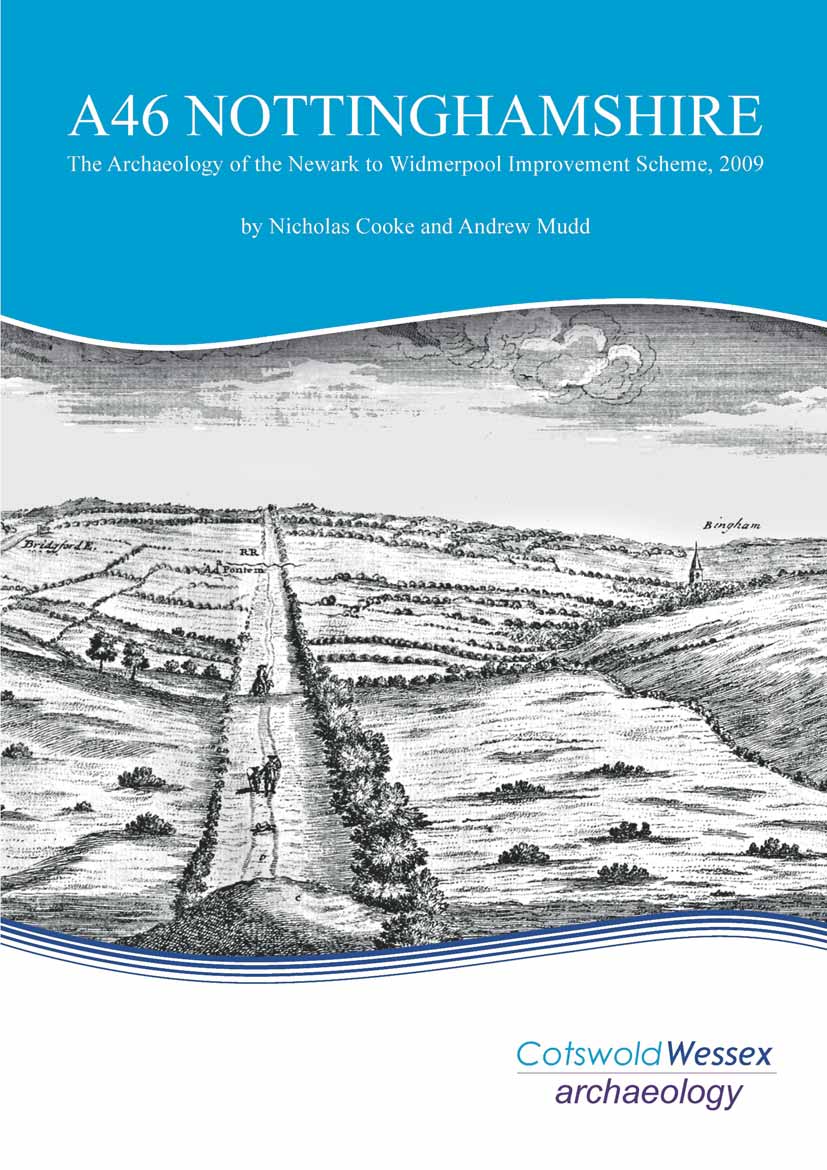A46 Nottinghamshire: The Archaeology of the Newark to Widmerpool Improvement Scheme, 2009
Nicholas Cooke & Andrew Mudd

Description
The A46 trunk road in Nottinghamshire has its origins as the Roman Fosse Way, and archaeological work ahead of road improvements in 2009 between Newark and Widmerpool has shed new light on both Roman and pre-Roman use of this transect of land. A number of significant sites were revealed, including evidence for Iron Age and Roman settlement in the hinterland around the Roman small town of Margidunum near Bingham. Further to the south-west near Saxondale, Roman roadside enclosures became the location of early Anglo-Saxon cremation burials and perhaps also a 'tumulus', as recorded by William Stukeley in 1722 in the middle of the Fosse Way. The prehistory of the landscape included further Iron Age settlements and land boundaries on the higher land of the Wolds. Earlier still was a Beaker-period ring-ditch and inhumation burials at the foot of the Wolds near Stragglethorpe. The story of human occupation revealed during fieldwork goes back much further, with the discovery of Late Upper Palaeolithic flintwork in Farndon Fields on the gravel terrace south of Newark. This nationally important site comprised scatters of debris left in situ by flint-knappers of the Creswellian and Federmesser hunter-gather cultural traditions.
Details
| Published | Published By | Pages | ISBN | ||||||||||||||||||||||||||||||||||||||||||||||||||||||||||||||||||||||||||||||||||||||||||||||||
|---|---|---|---|---|---|---|---|---|---|---|---|---|---|---|---|---|---|---|---|---|---|---|---|---|---|---|---|---|---|---|---|---|---|---|---|---|---|---|---|---|---|---|---|---|---|---|---|---|---|---|---|---|---|---|---|---|---|---|---|---|---|---|---|---|---|---|---|---|---|---|---|---|---|---|---|---|---|---|---|---|---|---|---|---|---|---|---|---|---|---|---|---|---|---|---|---|---|---|---|
| Jan. 1, 2014 | Cotswold Wessex Archaeology | 529 | 978-0-9553534-6-8 | ||||||||||||||||||||||||||||||||||||||||||||||||||||||||||||||||||||||||||||||||||||||||||||||||
| License Information | |||||||||||||||||||||||||||||||||||||||||||||||||||||||||||||||||||||||||||||||||||||||||||||||||||
| Copyright © Wessex Archaeology. This work is openly licensed via CC BY-NC-ND 4.0 | |||||||||||||||||||||||||||||||||||||||||||||||||||||||||||||||||||||||||||||||||||||||||||||||||||
